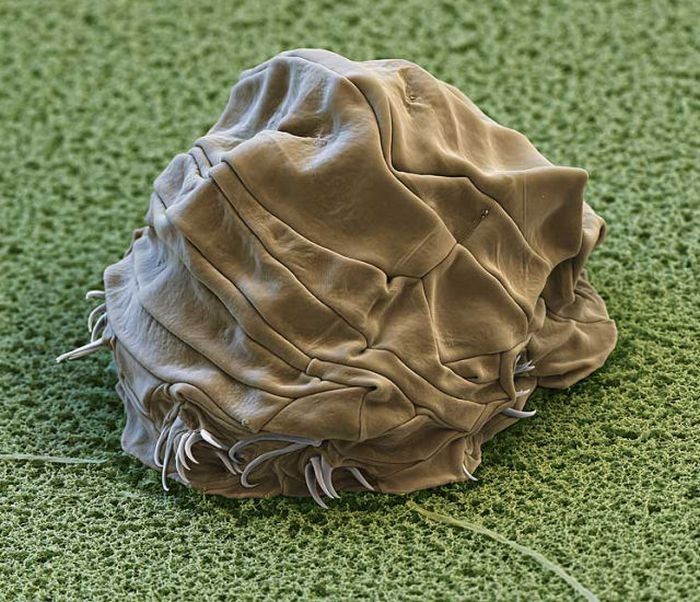|
|
Tardigrades
|
Tardigrades are oviparous, and fertilisation is usually external. Mating occurs during the moult with the eggs being laid inside the shed cuticle of the female and then covered with sperm. A few species have internal fertilisation, with mating occurring before the female fully sheds her cuticle. In most cases, the eggs are left inside the shed cuticle to develop, but some attach them to the nearby substrate.
The eggs hatch after no more than fourteen days, with the young already possessing their full complement of adult cells. Growth to the adult size therefore occurs by enlargement of the individual cells (hypertrophy), rather than by cell division. Tardigrades live for three to thirty months, and may moult up to twelve times.
Most tardigrades are phytophagous (plant eaters) or bacteriophagous (bacteria eaters), but some are predatory (e.g., Milnesium tardigradum).
|
|









